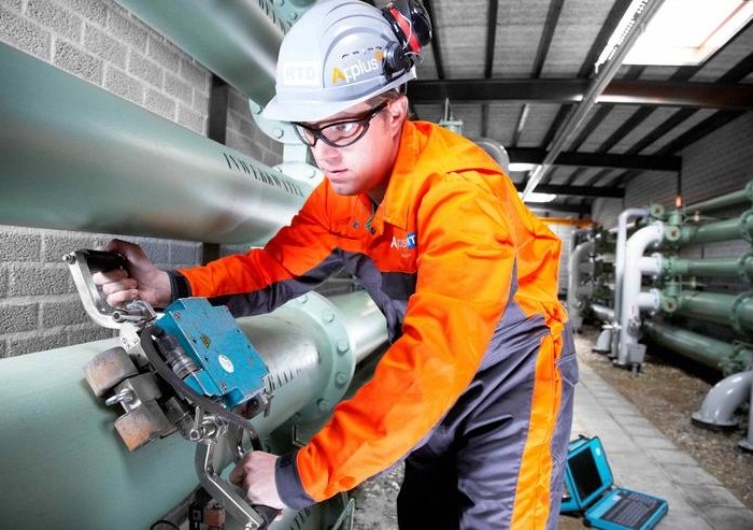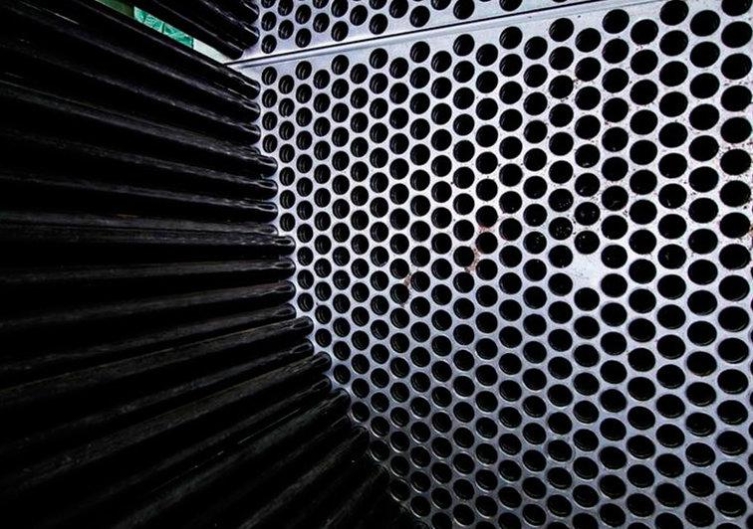La inspección por corrientes inducidas tiene diversas aplicaciones:
En inspecciones de soldaduras, puede utilizarse para detectar grietas en el cordón de soldadura, el borde de la soldadura (weld toe) o la zona afectada por el calor (ZAC). Como las corrientes inducidas no se ven afectadas por la presencia de recubrimientos no metálicos, no es necesario retirar la capa de pintura u otro recubrimiento antes de la inspección.
La inspección por corrientes inducidas también puede emplearse para la detección de grietas en otros objetos metálicos, como tuberías, tanques y estructuras (por ejemplo, puentes).
Una aplicación muy extendida de esta técnica es la inspección de tubos de intercambiadores de calor. Mediante una sonda interna tipo bobina (bobbin coil), es posible examinar los tubos a una velocidad relativamente alta. Aunque la inspección se realiza desde el interior del tubo, se pueden detectar defectos tanto en el interior como en el exterior, tales como picaduras internas y externas, pérdida de espesor de pared o desgaste por contacto con deflectores (baffle wear). Las indicaciones de defectos se evalúan in situ y se registran directamente en el software de informes, lo que permite entregar el informe de resultados inmediatamente después de la inspección.
Aunque el método convencional de corrientes inducidas solo puede aplicarse a tubos fabricados en materiales no ferromagnéticos (como latón, titanio o la mayoría de los aceros inoxidables), Applus+ también ofrece alternativas basadas en corrientes inducidas para tubos de materiales ferromagnéticos, como el acero al carbono y el acero dúplex, mediante: Remote Field Testing (RFT) y Corrientes inducidas con saturación magnética.
Otra opción para la inspección de tubos de intercambiadores de calor (tanto de materiales ferromagnéticos como no ferromagnéticos) es nuestra inspección ultrasónica IRIS (Internal Rotary Inspection System).
Otros métodos END basados en corrientes inducidas que Applus+ ofrece incluyen:
- Remote Field Testing (RFT) o Ensayos de campo lejano : inspección de tubos ferromagnéticos en intercambiadores de calor
- Corrientes inducidas con saturación (parcial): inspección de tubos ferromagnéticos, incluidos tubos aleteados (finfan)
- Incotest - Corrientes inducidas pulsadas: detección de corrosión bajo aislamiento (CUI)
- ACFM - Medición de campos de corrriente alterna: detección y dimensionamiento de grietas por fatiga superficiales
- SLOFEC - Inspección de bases de tanques y tuberías: escaneo de fondos de tanques y tuberías
Los beneficios de la inspección por corrientes inducidas en tubos de intercambiadores de calor incluyen una alta velocidad de inspección, la obtención inmediata de resultados y la detección y dimensionamiento de defectos internos y externos. Además, permite identificar tanto la pérdida gradual de espesor de pared como defectos localizados en un solo escaneo.
Otro beneficio destacado de la inspección por corrientes inducidas en soldaduras es que no es necesario retirar el recubrimiento, como pintura u otros revestimientos no metálicos.
Medición de campos de corriente alterna (ACFM)
La medición de campos de corriente alterna (ACFM) es una técnica electromagnética que permite la detección y la medición (de la longitud y la profundidad) de grietas superficiales en materiales metálicos. El principio en el que se basa esta técnica es que una corriente alterna constante en un solenoide tangencial, alejado de la superficie de ensayo, induce corrientes eléctricas en la superficie que son unidireccionales y de una fuerza uniforme en una zona localizada bajo el solenoide. Si no existen defectos en esta zona, las corrientes eléctricas no sufrirán ninguna perturbación. Si hay una grieta, esta perturba la corriente uniforme, que fluye alrededor de los extremos de la grieta y por la cara de la misma. Para controlar el equipo y mostrar los resultados se utiliza un PC estándar. La ACFM es única en su forma de presentar los datos.
Medición de campos de corriente alterna (ACFM)
DESCARGAR VERSIÓN EN PDFINCOTEST Corrientes inducidas pulsadas
La técnica RTD INCOTEST (INsulated COmponent TESTing) está basada en el principio de las corrientes inducidas pulsadas y se trata de un método fiable de examinar tuberías y recipientes ferrosos a través de su aislamiento térmico y de su recubrimiento de protección. La tecnología de corrientes inducidas pulsada, capaz de examinar los componentes en profundidad, resulta una herramienta excelente para priorizar futuras inspecciones. En esta técnica, la bobina emisora genera corrientes inducidas en la superficie del material. A medida que estas corrientes se difunden, generan un campo magnético que se detecta en la bobina receptora situada en la sonda. El grosor remanente promedio de la pared situado dentro del campo magnético es proporcional al tiempo de caída de la señal recibida.
Inspección de tubos ferromagnéticos mediante Ensayo de Campo Remoto (RFT) y Corrientes Inducidas con Saturación Parcial (PSEC)
La inspección por corrientes inducidas (Eddy Current testing) es un método de ensayos no destructivos (NDT) que se utiliza comúnmente para inspeccionar tubos de intercambiadores de calor. Sin embargo, la técnica convencional de corrientes inducidas no puede aplicarse en tubos fabricados con materiales ferromagnéticos, como el acero al carbono, debido a la permeabilidad (comportamiento magnético) del material del tubo.
Para la inspección de tubos ferromagnéticos en intercambiadores de calor, Applus+ emplea técnicas basadas en corrientes inducidas, como ensayos de campo remoto (Remote Field Testing- RFT) y corrientes inducidas con saturación parcial (Partial Saturation Eddy Current- PSEC), así como la técnica por ultrasonidos IRIS.


